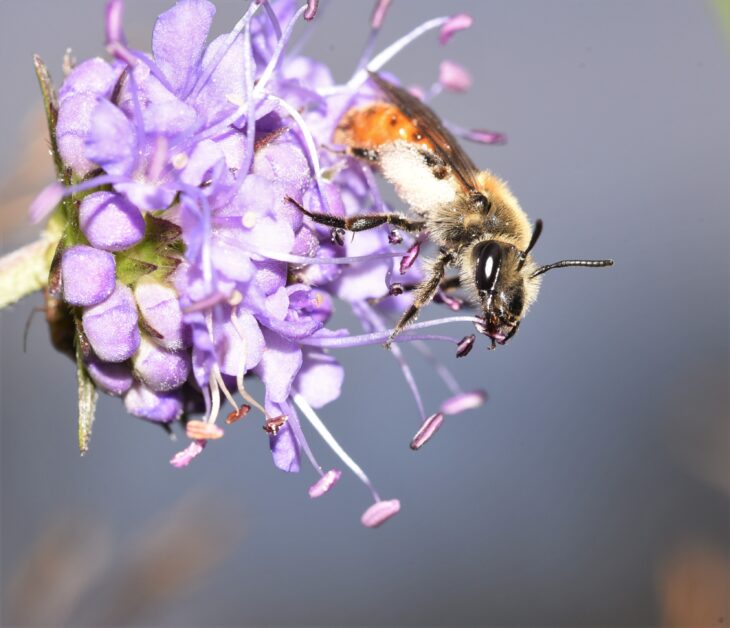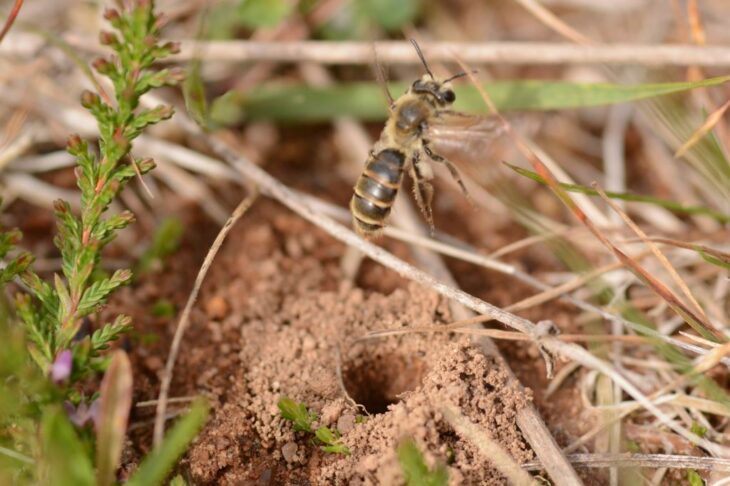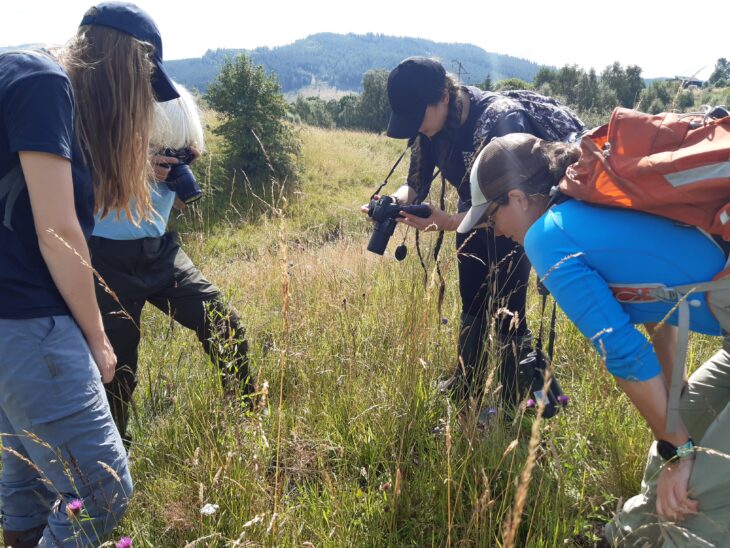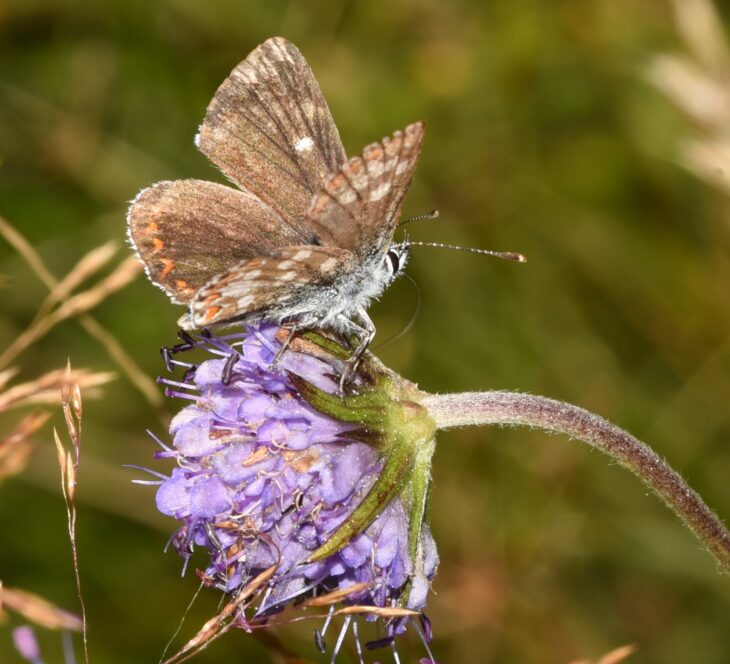Buzzing in the meadow
Late last summer Genevieve Tompkins, Rare Invertebrates in the Cairngorms Project Officer, visited the Trust’s Kelneyburn Wildlife Reserve in search of a rare solitary bee. Genevieve shares her findings in this guest blog.

‘Bees’ is the new buzz word lately, with more and more people getting behind these fantastic insects. And for good reason. They are important pollinators of wild flowers and crops and a much-anticipated highlight of summer.
Despite this interest, many people are still unaware of the great diversity of bees in the UK, with over 270 species calling these islands home. The best-known is the honey bee (Apis mellifera), a species not actually native to the UK. There is mounting evidence of competition and disease spread from honeybees negatively impacting their wild cousins.
Another familiar sight are the bumblebees. Large and furry, many species frequent gardens, filling our lives with their charm.
The final group, the solitary bees, contains the largest number of species but is the least well known. This is immensely diverse group which includes some of the country’s rarest species.

One of these rarities is the small scabious mining bee (Andrena marginata), a focus of the Rare Invertebrates in the Cairngorms partnership project. Our project aims to increase knowledge of the distribution and ecology of this species, with volunteers finding 12 new square kilometre sites in the Cairngorms since 2017. We also carry out habitat work for the bee, such as scrub removal on nesting sites and planting devil’s-bit scabious (Succisa pratensis).
Small scabious mining bees are stunning, with the females sporting fluffy white legs for collecting pollen, golden hair on the thorax and head and a variable abdomen, ranging from bright orange to black with brown banding. The species is found in scattered locations, mainly across southern England and Wales and in the Scottish Highlands. Its rarity ensures its place on the Scottish Biodiversity List, Cairngorms Nature Action Plan and as Nationally Notable A in the Red Data Book.
Each female creates her own nest in compact, sparsely vegetated, sandy soil in sunny areas. And as the name suggests, the species is reliant (in Scotland) on the presence of devil’s-bit scabious. It needs this plant to collect pollen for young bees to feed on.

This combination of habitat features brought us to the Scottish Wildlife Trust’s Keltneyburn Wildlife Reserve one sunny day last August. I met with Perthshire Ranger Sara ‘Raz’ Rasmussen, two members of her Seasonal Ranger team and a local volunteer. Together we scoured the meadow, searching for the bee among the bobbing, lilac scabious heads.
The meadow proved to be an incredible place for invertebrates, with northern brown argus butterflies (Aricia artaxerxes) nectaring on scabious, nationally scarce red-legged robberflies (Dioctria cothurnata) using the damp scrub, and an incredible aggregation of field digger wasps (Mellinus arvensis) stocking their nests with paralysed flies. However, despite several exciting false alarms, the small scabious mining bee was not found.

With many similar bees using the site, and such perfect habitat, it is well worth visitors to the reserve paying close attention to the scabious flowers. Keep an eye out for this special insect from early August to mid-September. If you spot something you think might be this bee, please take a photo and send it to me at genevieve.tompkins@rspb.org.uk. The current known southern limit of the species in Scotland is Newtonmore, so any discoveries in Perthshire would be thrilling news indeed!
Genevieve Tompkins, Project Officer, Rare Invertebrates in the Cairngorms
The Rare Invertebrates in the Cairngorms project was part-financed by the Scottish Government and the European Community LEADER 2014-2020 programme for the period between 2017-2019. During 2020-21, the project has been funded by the Cairngorms National Park Authority, RSPB Scotland, Cairngorms Connect (via the Endangered Landscapes Programme), the Cairngorms Trust Green Recovery Fund and the Nature Restoration Fund.
The project partners are RSPB, Buglife, Butterfly Conservation, Cairngorms National Park Authority, NatureScot, British Dragonfly Society and the Royal Zoological Society of Scotland.
Help protect Scotland’s wildlife
Our work to save Scotland’s wildlife is made possible thanks to the generosity of our members and supporters.
Join today from just £3 a month to help protect the species you love.
Preface
Late last summer Genevieve Tompkins, Rare Invertebrates in the Cairngorms Project Officer, visited the Trust’s Kelneyburn Wildlife Reserve in search of a rare solitary bee. Genevieve shares her findings in this …
